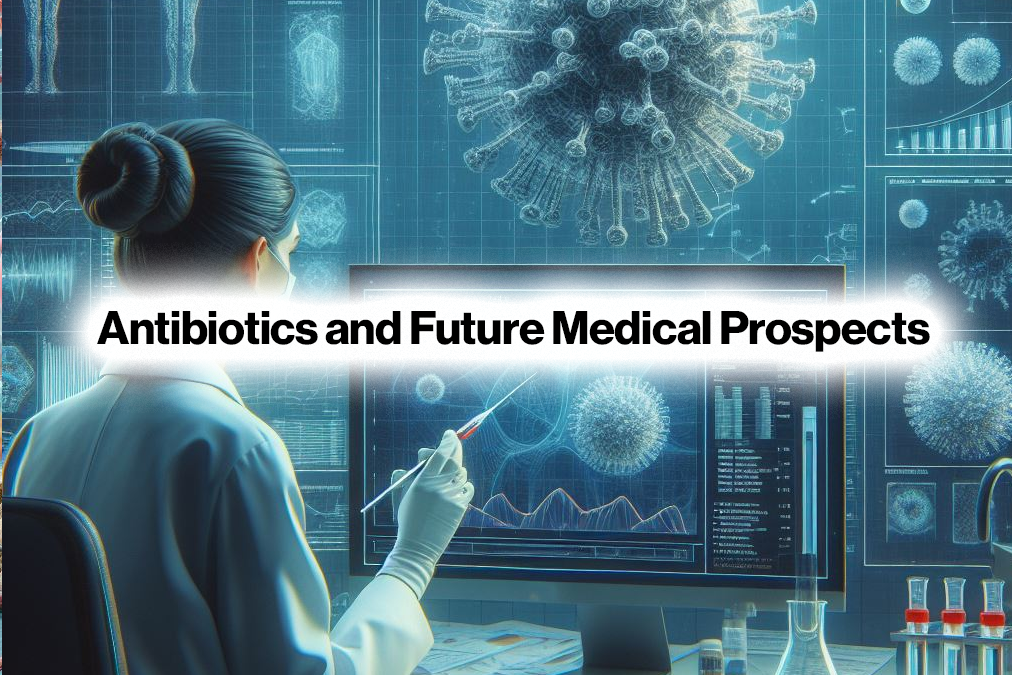In the ever-evolving landscape of medical science, antibiotics have stood as a cornerstone of modern medicine for several decades. These remarkable compounds have revolutionized the treatment of bacterial infections and saved countless lives. As we delve into the realm of antibiotics and their future prospects, we unearth a captivating journey of discovery, challenges, and opportunities that lie ahead.
Understanding Antibiotics: A Triumph in Medical Science
Antibiotics represent a pivotal triumph in the field of medical science. These molecules, often derived from natural sources like fungi and bacteria, are designed to target and eliminate harmful bacteria, preventing their growth and spread within the body. The discovery of penicillin by Alexander Fleming in 1928 marked a turning point, as it paved the way for a myriad of other antibiotics, each with their unique mechanisms of action and capabilities.
The Rise of Antibiotic Resistance
However, with great success came unforeseen challenges. The misuse and overuse of antibiotics have led to the emergence of antibiotic-resistant bacteria, posing a significant threat to global health. The rapid adaptability of bacteria has led to the development of strains that are impervious to conventional antibiotics, rendering some previously curable infections untreatable. This alarming trend has prompted the medical community to reevaluate its approach to antibiotic usage.
Innovations in Antibiotic Development
In the face of antibiotic resistance, researchers and pharmaceutical companies are diligently working to develop novel antibiotics with innovative mechanisms of action. From exploring new sources in extreme environments to harnessing the potential of nanotechnology, the landscape of antibiotic development is witnessing an era of exciting advancements. These efforts aim not only to combat existing antibiotic-resistant strains but also to stay ahead of bacterial evolution.
Personalized Medicine and Antibiotics
The future of medicine is gradually shifting towards personalized treatments, and antibiotics are no exception. With the advent of precision medicine, healthcare providers can tailor antibiotic therapies to individual patients based on their genetic makeup, microbiome composition, and specific bacterial infections. This approach maximizes treatment efficacy while minimizing the risk of antibiotic resistance, presenting a promising avenue for the future.
Combating Biofilm Infections
Biofilms, intricate communities of bacteria encased in a protective matrix, pose a unique challenge in antibiotic treatment. Traditional antibiotics often struggle to penetrate biofilms effectively, allowing bacterial infections to persist despite treatment efforts. However, ongoing research is unraveling the mysteries of biofilm formation and exploring innovative strategies to disrupt these protective structures, thereby enhancing the effectiveness of antibiotic treatments.
Digitalization of Antibiotic Research
The digital age has ushered in transformative changes across various industries, and medicine is no exception. The field of antibiotic research is benefitting from computational tools that expedite the discovery and development of new antibiotics. Through advanced algorithms and simulations, researchers can predict the interactions between antibiotics and bacteria, streamlining the drug discovery process and potentially reducing the time required to bring new antibiotics to market.
Environmental Considerations and Antibiotics
The impact of antibiotics extends beyond clinical settings, raising concerns about their environmental footprint. The release of antibiotics into water bodies through pharmaceutical waste and agricultural runoff can contribute to the spread of antibiotic-resistant bacteria in the environment. As we envision the future of antibiotics, a holistic approach that considers the environmental implications of antibiotic usage becomes increasingly vital.
Collaboration and Interdisciplinary Efforts
The challenges and opportunities presented by antibiotics require a collaborative effort from diverse fields. Researchers, clinicians, microbiologists, pharmacologists, and environmental scientists must join forces to tackle antibiotic resistance, develop innovative therapies, and establish responsible antibiotic usage guidelines. The interdisciplinary synergy is crucial to navigate the complexities of antibiotics and shape a sustainable medical landscape.
Conclusion
In the grand tapestry of medical history, antibiotics stand as a testament to human ingenuity and progress. From their inception as a miraculous solution to bacterial infections to the present challenges of antibiotic resistance, antibiotics have come a long way. The future of antibiotics holds immense promise, with personalized treatments, innovative drug development, and interdisciplinary collaboration paving the path forward.
As we gaze into the horizon of medical advancements, let us remember that the journey to conquer antibiotic resistance is one that demands unwavering dedication and a united global effort. The story of antibiotics is far from over; it is a narrative of innovation, resilience, and the boundless potential of human intellect.

Leave a Reply